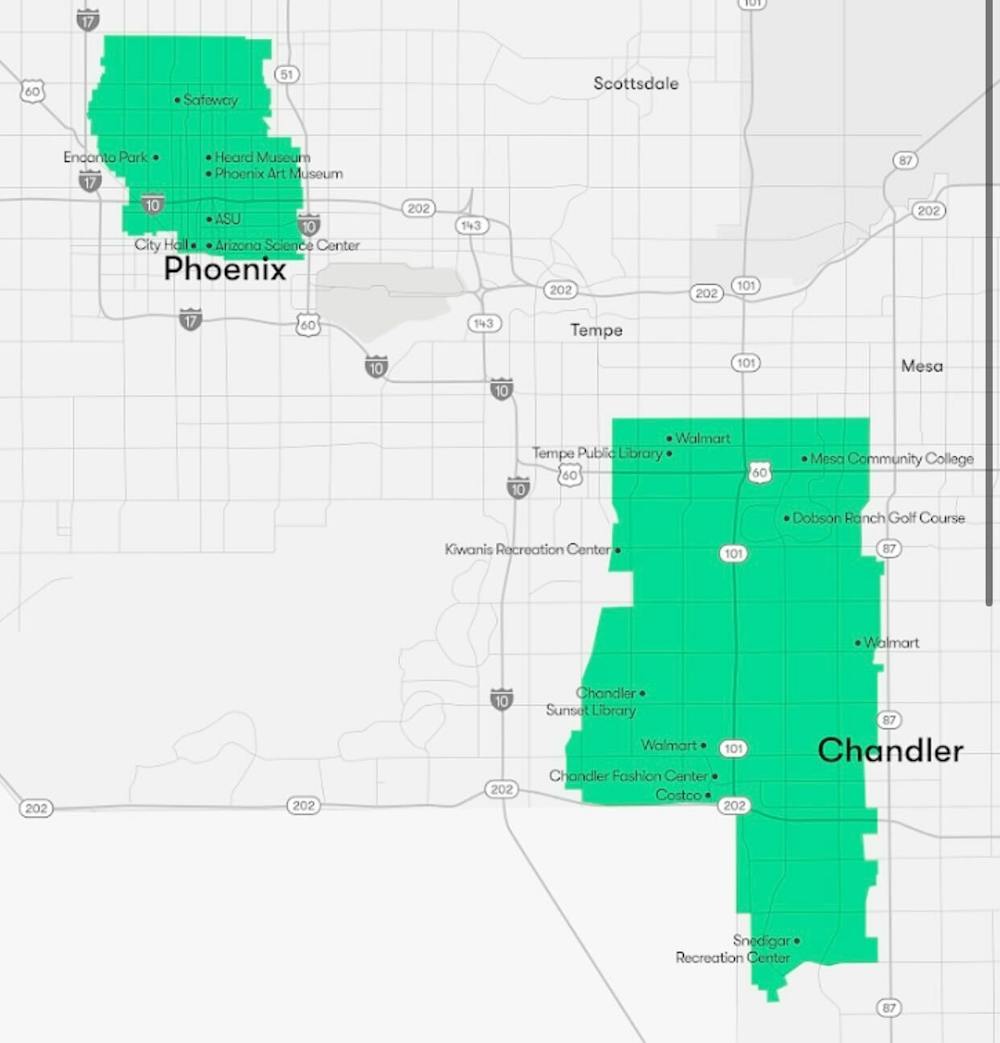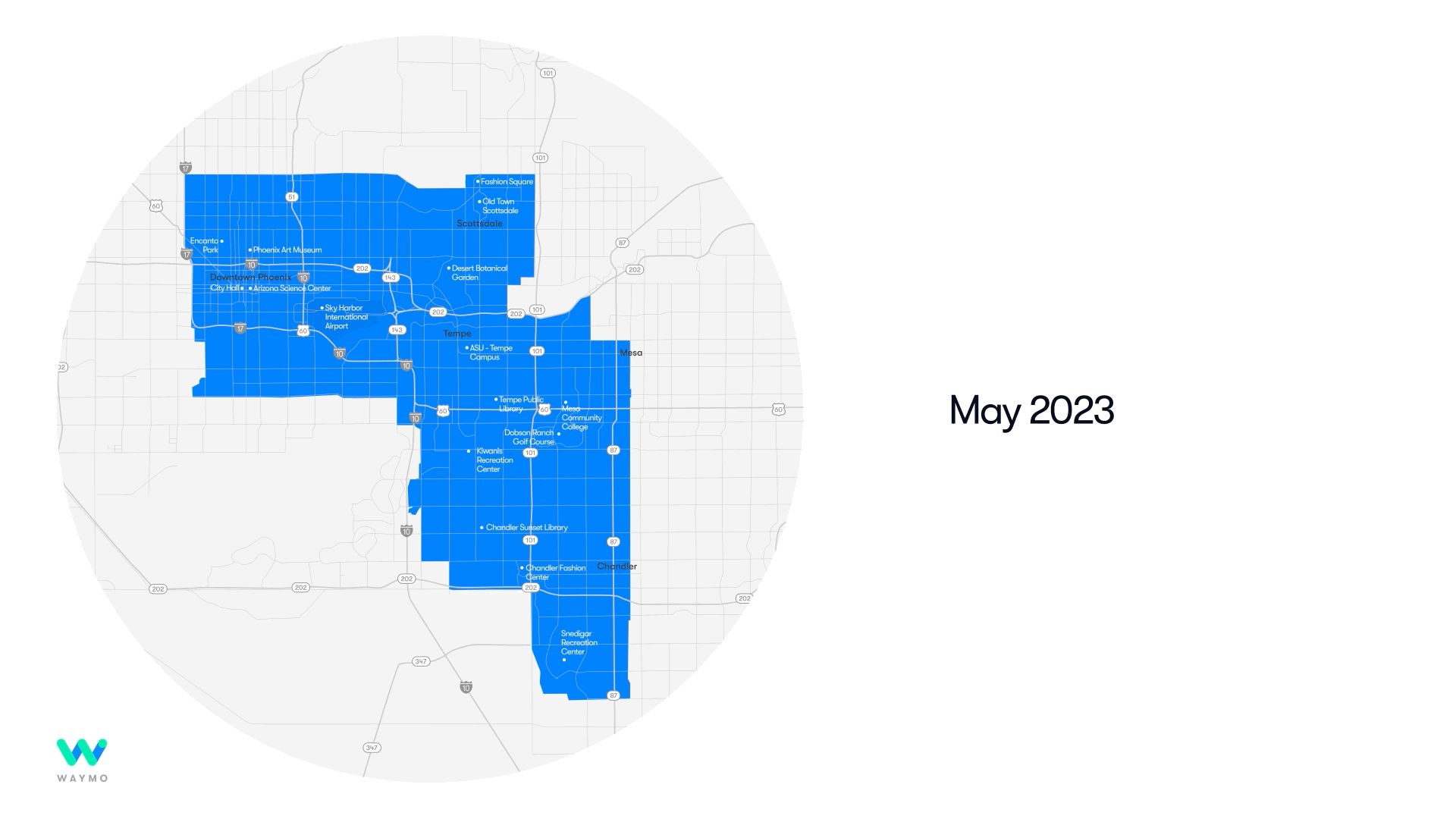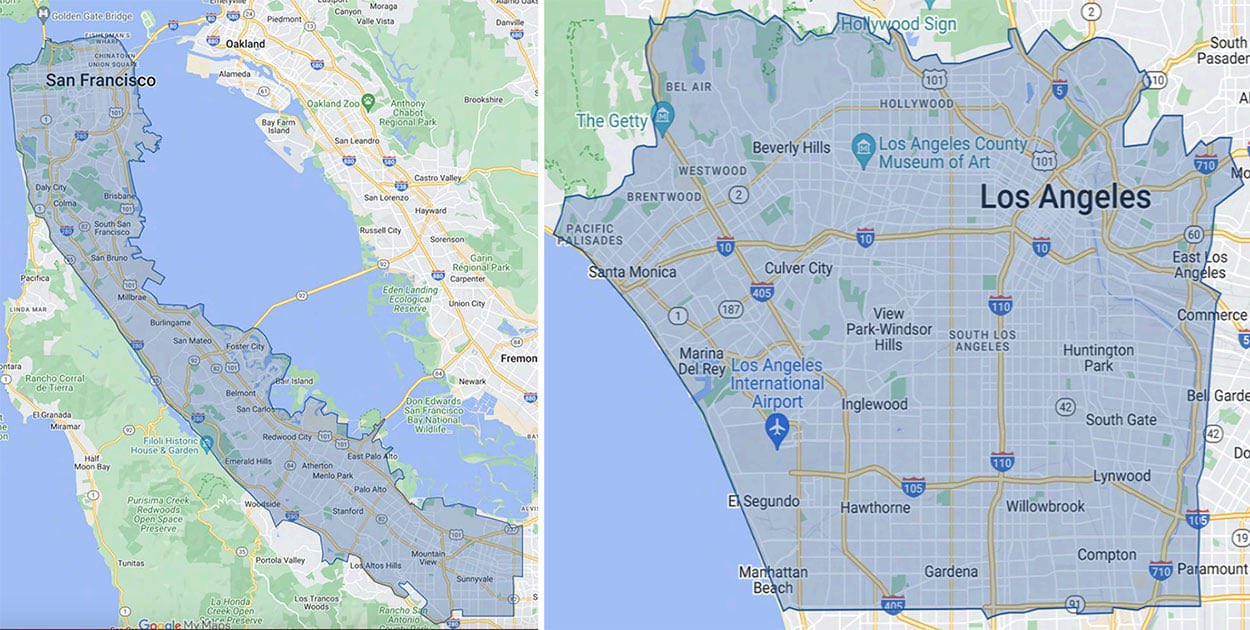The data for each traffic light for each time of the day is preprogrammed i.e rush hours vs lunch hours vs night hours etc. There is a schedule and given that Waymo is already relying upon HD maps as a prerequisite all they need to do is include that “traffic light timing table” into it.I think the issue is that the info from DOT is not dependable since they are not consistent with how they follow the NHTSA model.
Welcome to Tesla Motors Club
Discuss Tesla's Model S, Model 3, Model X, Model Y, Cybertruck, Roadster and More.
Register
Install the app
How to install the app on iOS
You can install our site as a web app on your iOS device by utilizing the Add to Home Screen feature in Safari. Please see this thread for more details on this.
Note: This feature may not be available in some browsers.
-
Want to remove ads? Register an account and login to see fewer ads, and become a Supporting Member to remove almost all ads.
-
Tesla's Supercharger Team was recently laid off. We discuss what this means for the company on today's TMC Podcast streaming live at 1PM PDT. You can watch on X or on YouTube where you can participate in the live chat.
You are using an out of date browser. It may not display this or other websites correctly.
You should upgrade or use an alternative browser.
You should upgrade or use an alternative browser.
Waymo
- Thread starter Daniel in SD
- Start date
diplomat33
Average guy who loves autonomous vehicles
The data for each traffic light for each time of the day is preprogrammed i.e rush hours vs lunch hours vs night hours etc. There is a schedule and given that Waymo is already relying upon HD maps as a prerequisite all they eed to do is include that “traffic light timing table” into it.
Yes I know that. But what if DOT changes the traffic light programming? Waymo would need to ask DOT to give them an updated traffic light timing table every time there is a chance and then update the HD map for the entire fleet. Waymo can create that traffic light timing table on their own and update their HD maps faster.
Why ask when I can read your mind. Got it!Yes I know that. But what if DOT changes the traffic light programming? Waymo would need to ask DOT to give them an updated traffic light timing table every time there is a chance and then update the HD map for the entire fleet. Waymo can create that traffic light timing table on their own and update their HD maps faster.
I assume it would be like how the DOT already works...a work order system. Since I doubt traffic engineers decide to, at arbitrary times, go to each light and just throw a random number in for the light. They send the data to Waymo like "light changed today, updated to Xs". Then Waymo could go with the most cautious of the two until it's confirmed.But how fast do you think DOT would notify Waymo and how long would it take for Waymo for update the Waymo Driver? I doubt DOT would be quick enough.
My city changes light cycles at least twice a year (college town, they change for summer since we lose 1/3 our population). They know in advance when they are going to be tweaking lights and put out notices. In fact a local intersection to me will be closed this weekend due to work on lights and this is known well in advance.
I'm just quoting you, quoting the Waymo guy. Don't know why you say "It would likely slow down for a yellow light as the law requires." when he specifically says they use that timing to determine if they should stop or not.And the Waymo Driver would likely have driving policy to be cautious regardless of how long the yellow light lasts. It is not just going to blow through yellow lights, assuming the DOT info is correct. It would likely slow down for a yellow light as the law requires.
But once we do have an understanding of what the real duration is, that can help us make the difference between deciding to go, or deciding to stop when the light turns yellow.
So, that when we are driving towards an intersection and the light turns yellow, we can make a much more accurate prediction of when the light is going to turn red, and therefore, whether we should stop sooner, if the duration is going to be short, so that we don't have a red light violation, or that we can continue through and have a smoother ride if it's going to be up longer. I think that's just a great example of how different parts of our system work together to produce a solution that's ultimately better for our users and for the safety of our system.
In that case Waymo will need to rebuild their perception logic. This is a no win situation.But what if DOT changes the traffic light programming?
diplomat33
Average guy who loves autonomous vehicles
In that case Waymo will need to rebuild their perception logic. This is a no win situation.
No, Waymo would not need to rebuild their perception logic. The whole point of Waymo's approach is that the cars can measure the time of a yellow light on their own and embed it in the HD maps for the entire fleet. So the whole idea is that the DOT can change the traffic light times and Waymo fleet can adapt on their own. The "perception logic" as you call it, would remain the same, the only change would be the time of a yellow light in the map. For example, the HD map would have a note that says "5 seconds for a yellow light" instead of "3 seconds for a yellow light".
Waymo will be continuously second guessing the DOT traffic lights for they are not constantly timed. The same traffic light will have different timing and it depends upon the day, hour and minute depending upon the traffic patterns that they have data collected and evaluated.The whole point of Waymo's approach is that the cars can measure the time of a yellow light on their own and embed it in the HD maps for the entire fleet.
dtdtdt
Member
I’m not sure about this. In general, the length of the yellow is based on the speed limit. Higher speed gets longer yellow. There are some smart traffic light controllers around here that change the duration or order of the green lights, but I haven’t noticed any changes to the yellow durations.Waymo will be continuously second guessing the DOT traffic lights for they are not constantly timed. The same traffic light will have different timing and it depends upon the day, hour and minute depending upon the traffic patterns that they have data collected and evaluated.
Care should be taken to develop off-peak signal timing plans that respect the lower traffic conditions that may benefit from a much lower cycle length than the peak hour. Similarly, weekend signal timing plans should be responsive to the needs of the community.
Yellow light change intervals have a minimum duration of 3 seconds and a maximum duration of 6 seconds
Last edited:
The only reason to change the yellow light duration on a periodic basis would be if you have a red light camera and need to boost revenue now and then.I’m not sure about this. In general, the length of the yellow is based on the speed limit. Higher speed gets longer yellow. There are some smart traffic light controllers around here that change the duration or order of the green lights, but I haven’t noticed any changes to the yellow durations.
You might change the green and red light durations to optimize traffic flow, but so long as the speed limts remain constant, there's no technical reason to change the yellow durations.
diplomat33
Average guy who loves autonomous vehicles
Waymo rider experience with a remote assistance event:
You can see in the video that a tow truck was completely blocking the road. The Waymo was not sure what to do. RA intervened within seconds and told the Waymo to do a 3 point turn to turn around and it did the maneuver very well.
I feel like this is a good example of AVs lacking that "out of box" thinking to figure things out when the normal path is blocked. But I am confident this case will go into the training set and will improve the Waymo Driver. As AVs get better in these scenarios, they will require remote assistance less often.
You can see in the video that a tow truck was completely blocking the road. The Waymo was not sure what to do. RA intervened within seconds and told the Waymo to do a 3 point turn to turn around and it did the maneuver very well.
I feel like this is a good example of AVs lacking that "out of box" thinking to figure things out when the normal path is blocked. But I am confident this case will go into the training set and will improve the Waymo Driver. As AVs get better in these scenarios, they will require remote assistance less often.
diplomat33
Average guy who loves autonomous vehicles
Another example of Waymo refusing to cross the road edge boundary whereas we see humans driving on the curb to get by the roadblock. Similar situation to the alley incident where Waymo will not cross the road edge into a private property instead backed all the way out vs here doing the 3 points turn to get out. The situation was handled relatively quickly.Waymo rider experience with a remote assistance event:
You can see in the video that a tow truck was completely blocking the road. The Waymo was not sure what to do. RA intervened within seconds and told the Waymo to do a 3 point turn to turn around and it did the maneuver very well.
I feel like this is a good example of AVs lacking that "out of box" thinking to figure things out when the normal path is blocked. But I am confident this case will go into the training set and will improve the Waymo Driver. As AVs get better in these scenarios, they will require remote assistance less often.
diplomat33
Average guy who loves autonomous vehicles
Another example of Waymo refusing to cross the road edge boundary whereas we see humans driving on the curb to get by the roadblock. Similar situation to the alley incident where Waymo will not cross the road edge into a private property instead backed all the way out vs here doing the 3 points turn to get out. The situation was handled relatively quickly.
Personally, I would like to see the Waymo cross the road edge like humans to get around the road block. It would be more convenient for the rider. But as discussed earlier, I wonder if the rule not to drive on private property is more of a liability issue than a tech issue. Ultimately, I trust Waymo will add this case in their training set to improve the Waymo Driver. We've seen the Waymo do 3 point turns before in similar cases. So it could be that the planner just needs some more data to train it on how to handle road blockages. If the Waymo Driver does not cross onto private property, it can still be trained to just turn around on its own without needing remote assistance to tell it what to do. When Waymo is able to handle more of these routing "edge cases" on its own, it will be a big improvement since it will reduce the need for remote assistance.
diplomat33
Average guy who loves autonomous vehicles
diplomat33
Average guy who loves autonomous vehicles
Liability reasons. You already see how much pushback Waymo is getting just by driving on regular road, add crossing boundary into people's private property.Personally, I would like to see the Waymo cross the road edge like humans to get around the road block. It would be more convenient for the rider. But as discussed earlier, I wonder if the rule not to drive on private property is more of a liability issue than a tech issue. Ultimately, I trust Waymo will add this case in their training set to improve the Waymo Driver. We've seen the Waymo do 3 point turns before in similar cases. So it could be that the planner just needs some more data to train it on how to handle road blockages. If the Waymo Driver does not cross onto private property, it can still be trained to just turn around on its own without needing remote assistance to tell it what to do. When Waymo is able to handle more of these routing "edge cases" on its own, it will be a big improvement since it will reduce the need for remote assistance.
I think the Waymo driver handled it by itself. Waymo's do have the capability to resolve issues on their own. I believe so because it took ~8 seconds between when the chime for remote assistance was initiated to when it says you are back on your way. That to me is too quick for remote assistance to be involved.
We've seen Waymo spot road closures blocks away and take a detour even before reaching the blockage. In my opinion, I think what happened is the planner "thought" the car was a temporary blockage that would move away quickly but it lasted longer than anticipated so it phoned home for assistance to see if it should wait out the "temporary" obstruction, while it was waiting for remote assistance, it decided the best solution was to turn around. Roadblocks should be one of the easiest things to handle at this point and shouldn't be an edge case.
diplomat33
Average guy who loves autonomous vehicles
Liability reasons. You already see how much pushback Waymo is getting just by driving on regular road, add crossing boundary into people's private property.
I think the Waymo driver handled it by itself. Waymo's do have the capability to resolve issues on their own. I believe so because it took ~8 seconds between when the chime for remote assistance was initiated to when it says you are back on your way. That to me is too quick for remote assistance to be involved.
We've seen Waymo spot road closures blocks away and take a detour even before reaching the blockage. In my opinion, I think what happened is the planner "thought" the car was a temporary blockage that would move away quickly but it lasted longer than anticipated so it phoned home for assistance to see if it should wait out the "temporary" obstruction, while it was waiting for remote assistance, it decided the best solution was to turn around. Roadblocks should be one of the easiest things to handle at this point and shouldn't be an edge case.
That makes sense. Thanks.
I am very excited that Waymo's expansion got approved. The expanded service areas in LA and SF are huge.
I was about to say the same thing. It would be a testing ground to see how their service and infrastructure holds up to servicing large locations. I think this might be the new normal now, expanding in larger areas.That makes sense. Thanks.
I am very excited that Waymo's expansion got approved. The expanded service areas in LA and SF are huge.
From this 2019

To this 2022/2023

To 2024

diplomat33
Average guy who loves autonomous vehicles
I was about to say the same thing. It would be a testing ground to see how their service and infrastructure holds up to servicing large locations. I think this might be the new normal now, expanding in larger areas.
From this 2019

To this 2022/2023

To 2024

Yep. And don't forget Waymo is also working on launching in Austin too.
You are correct that this will be a big test for Waymo both in terms of operations (rider support, wait times etc) but also safety since a bigger areas means more miles, more edge cases, and thus more risk and potential for more accidents.
Also, I remember when critics were saying Waymo would never expand beyond Chandler. Waymo proved them wrong. And at the risk of fanboying a bit, I think it should be noted how incredible this. I mean, we are talking about cars that can drive themselves with no human driver across hundreds of square miles, millions of miles, in multiple cities, on all road types, in almost all weather. From a tech point of view, it is remarkable.
Similar threads
- Replies
- 20
- Views
- 3K
- Article
- Replies
- 4
- Views
- 2K
- Replies
- 130
- Views
- 4K
- Replies
- 23
- Views
- 3K


